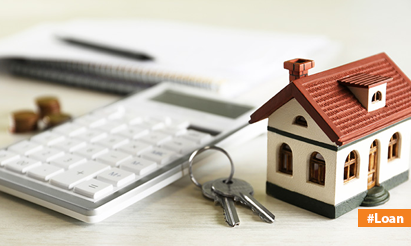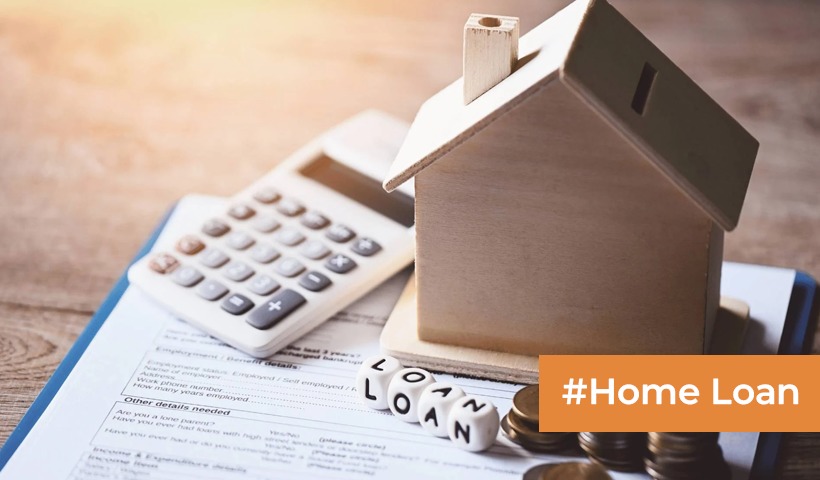How will the higher repo rate affect the EMIs on your house loan?
The Reserve Bank of India (RBI) charges a repo rate when lending money to commercial banks. The repo rate influences the interest rate on home loans because it tells banks to boost their interest rates. Equated Monthly Installments (EMIs) for borrowers also rise as the interest rate on house loans does.
A rise in the repo rate may have a variety of effects on home loan EMIs. First off, interest rates on home loans rise along with an increase in the repo rate. Due to this, borrowers’ home loan interest rates must be paid at a higher rate, which raises their monthly installments (EMIs). For instance, the EMI would be around INR 16,708 if a borrower had a house loan of INR 20 lakhs at an interest rate of 7% for 20 years. The EMI would climb to INR 17,058 if the interest rate were to rise by 1%.
Second, the duration of the house loan is also impacted by the rise in the repo rate. Due to the borrower’s increased monthly need to pay a larger EMI as the interest rate rises, the loan’s term also lengthens. This implies that even if the borrower keeps making the same monthly payment, it will take longer to pay off the debt. For instance, if the interest rate on a home loan with a 20-year term rises by 1%, the loan’s term will now be 20 years and 9 months.
Thirdly, the affordability of house loans may also be impacted by an increase in the repo rate. Borrowers find it harder to finance their monthly payments when the EMI rises along with the interest rate on house loans. This may make it difficult for them to pay off their mortgage and place a burden on their budget. After a repo rate increase, borrowers who are already having trouble making their mortgage payments may find it significantly more difficult to do so.
It is crucial to remember that while an increase in the repo rate may affect house loan EMIs, it may also benefit depositors’ savings. Depositors receive a larger rate of interest on their savings as the interest rate on deposits rises, making it more appealing for them to do so. This in turn may contribute to raising the nation’s total savings rate and enhancing the financial stability of the economy.
A rise in the repo rate may significantly affect the EMIs of house loans. To keep up with their house loan EMIs, borrowers must be ready for an increase in their monthly payments and think about how to manage their resources. To make sure they are getting the best deal possible, borrowers should routinely evaluate their home loan interest rate and compare it to the rates being offered by competitors. Borrowers can take measures to lessen the effect of a repo rate rise on their home loan EMIs by being aware and proactive.
The Reserve Bank of India (RBI) charges a repo rate when lending money to commercial banks. The repo rate influences the interest rate on home loans because it tells banks to boost their interest rates. Equated Monthly Installments (EMIs) for borrowers also rise as the interest rate on house loans does.
A rise in the repo rate may have a variety of effects on home loan EMIs. First off, interest rates on home loans rise along with an increase in the repo rate. Due to this, borrowers’ home loan interest rates must be paid at a higher rate, which raises their monthly installments (EMIs). For instance, the EMI would be around INR 16,708 if a borrower had a house loan of INR 20 lakhs at an interest rate of 7% for 20 years. The EMI would climb to INR 17,058 if the interest rate were to rise by 1%.
Second, the duration of the house loan is also impacted by the rise in the repo rate. Due to the borrower’s increased monthly need to pay a larger EMI as the interest rate rises, the loan’s term also lengthens. This implies that even if the borrower keeps making the same monthly payment, it will take longer to pay off the debt. For instance, if the interest rate on a home loan with a 20-year term rises by 1%, the loan’s term will now be 20 years and 9 months.
Thirdly, the affordability of house loans may also be impacted by an increase in the repo rate. Borrowers find it harder to finance their monthly payments when the EMI rises along with the interest rate on house loans. This may make it difficult for them to pay off their mortgage and place a burden on their budget. After a repo rate increase, borrowers who are already having trouble making their mortgage payments may find it significantly more difficult to do so.
It is crucial to remember that while an increase in the repo rate may affect house loan EMIs, it may also benefit depositors’ savings. Depositors receive a larger rate of interest on their savings as the interest rate on deposits rises, making it more appealing for them to do so. This in turn may contribute to raising the nation’s total savings rate and enhancing the financial stability of the economy.
A rise in the repo rate may significantly affect the EMIs of house loans. To keep up with their house loan EMIs, borrowers must be ready for an increase in their monthly payments and think about how to manage their resources. To make sure they are getting the best deal possible, borrowers should routinely evaluate their home loan interest rate and compare it to the rates being offered by competitors. Borrowers can take measures to lessen the effect of a repo rate rise on their home loan EMIs by being aware and proactive.
Disclaimer: The views expressed above are for informational purposes only based on industry reports and related news stories. PropertyPistol does not guarantee the accuracy, completeness, or reliability of the information and shall not be held responsible for any action taken based on the published information.




